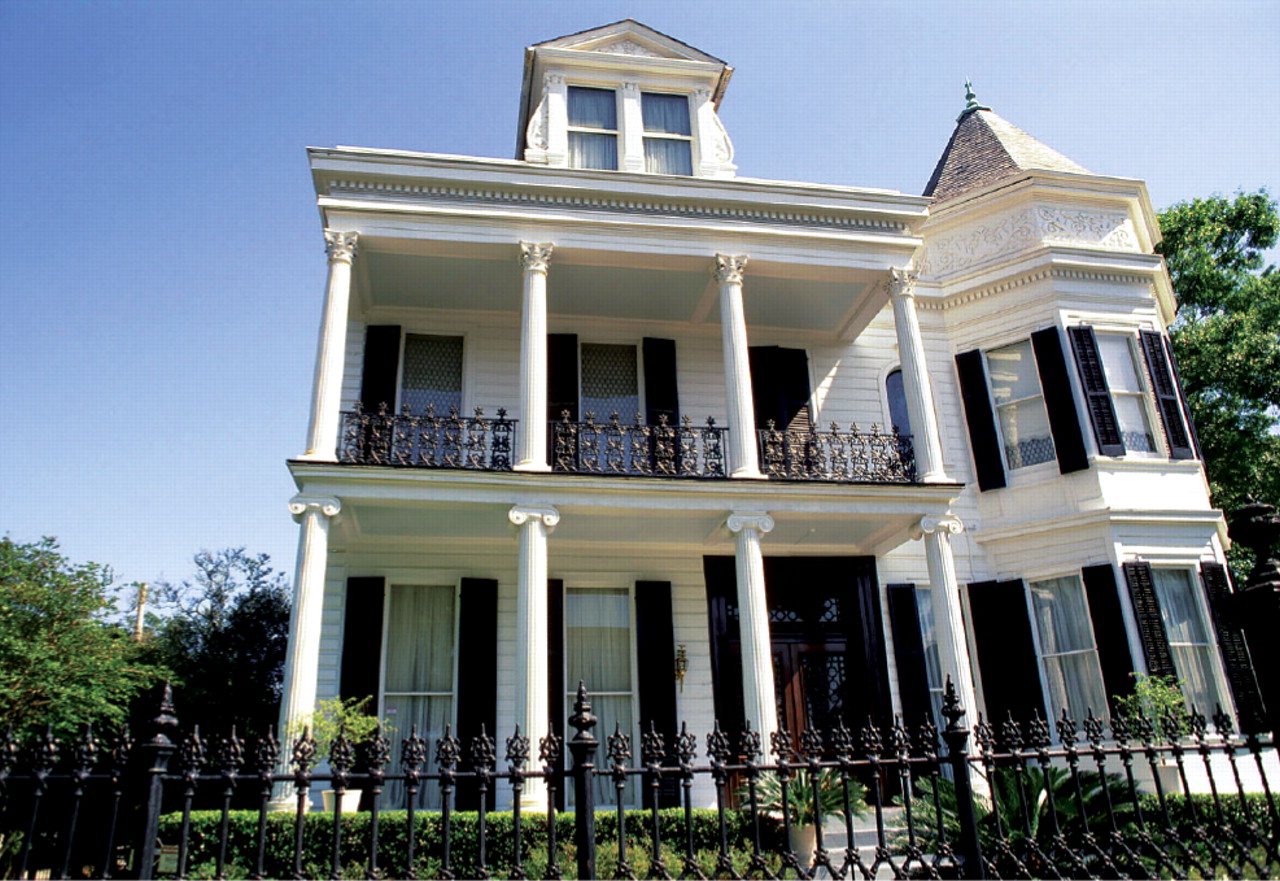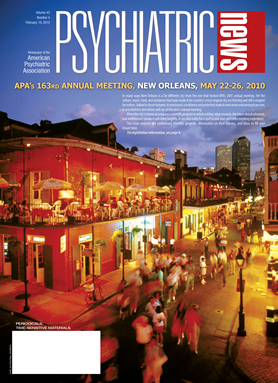The French Quarter is New Orleans in the minds of most first-time visitors to the city, but New Orleans is much more than the French Quarter.
A short stroll or a streetcar ride leads sightseers to less-explored architectural and cultural havens away from the better known Quarter.
Just east across Esplanade Avenue lies the Faubourg Marigny neighborhood, carved out of a plantation in 1805 and home first to French residents and then successively to Caribbean, German, Irish, Spanish, and Italian immigrants over the next century and a half. A potpourri of architectural styles range from town-houses and Greek Revival homes to simple cottages and shotgun houses.
The humbler architectural examples are found throughout New Orleans. Creole cottages are two rooms wide and two or more deep, with a pitched roof and a front overhang. The shotgun house is one room wide and two to four rooms deep, beneath a continuous gable roof. The name supposedly derives from the open alignment of rooms and doors, so that a shotgun fired at the front of the house would hit nothing till it reached the back wall.
Many of these old buildings fell into disrepair after World War II, but new owners began rehabilitating the neighborhood in the 1970s. Few modern structures intrude into the sense of history, and the Marigny remains one of the nation's most intact 19th-century neighborhoods. The old buildings, framed by banana leaves and palm fronds, make a walk through the district feel like stepping into a film-noir movie or a Somerset Maugham novel.
At night, another New Orleans tradition comes to life in the Marigny. Cutting through the history is Frenchman Street, home to restaurants, bars, and music clubs, like Sweet Lorraine's and the Spotted Cat. Jazz pianist Ellis Marsalis (father of Branford and Wynton) plays weekly at Snug Harbor, an old-fashioned jazz club that serves up authentic local music.
A lucky stroller might also run into one of the less formal jazz bands that station themselves on the sidewalks. (Please contribute when they pass the hat at the end of a set.)
Traveling north along Esplanade Avenue leads to Tremé, possibly the oldest African-American neighborhood in the United States.
“People looking for the real New Orleans will find it in Tremé,” said archaeologist Christopher Matthews, Ph.D., now an associate professor of anthropology at Hofstra University and former head of the Greater New Orleans Archaeology Project. Matthews' excavations brought to light thousands of artifacts dating to the 1700s that shed new light on Tremé, illuminating New Orleans' rich racial and ethnic history.
“New Orleans was a backwater during the 18th century,” said Matthews in an interview. “Color and ancestry were less important than the sense of community that developed in the city. Here we can see African-American history in a place where it emerged but was not the sole element of identity.”
A sobering view of modern New Orleans comes from a visit to the parts of the city inundated after Hurricane Katrina. Breaches in the levee system flooded Lakeview, Gentilly, the Lower Ninth Ward, and other parts of the city.
One tour company bills its three-hour trip as “An eyewitness account of the events surrounding the most devastating natural—and man-made—disaster on American soil!”
New Orleanians, it should be noted, today emphasize the “man-made” part, blaming the tragedy on poor design and construction of the levee system erected to protect the large areas of the city that lie below sea level.
Driving through the Ninth Ward can be deceptive today. Isolated houses stand amid placid, grassy rectangles. However, what now looks like parkland were once city blocks full of houses before the storm. Reconstruction has been spotty and usually dependent on the resources of the residents.
Traveling to the west of the French Quarter, the St. Charles streetcar leads to Uptown and the Garden District, the latter a National Historic Landmark many of whose homes reflect the kind of faded luxury associated with tropical climates.
The streetcar ride alone is a step into history. The streetcars are part of the oldest continuously operating such system in the world, with cars built in the 1920s.
The Garden District is adjacent to the Mississippi River but is actually at a higher elevation than the worst-hit areas of the city and so was not severely flooded after Katrina.
The Garden District features an array of 19th-century homes set among lush gardens beneath magnolias, palms, and oaks. The grand homes were often built in Greek Revival or Italianate styles by wealthy merchants or plantation owners. Doric, Ionic, and Corinthian columns front the balconied houses, accented by elaborate wrought-iron railings and fences.
Continuing along the St. Charles Street streetcar line leads to Audubon Park and its zoo, one of the city's treasures.
Classical influences also permeate the cities within the city—the cemeteries that are the final destination of those legendary New Orleans jazz funerals. Because of the high water table and frequent flooding, the dead are laid to rest not beneath the earth but in tombs that rise from its surface. That gave architects a chance to show off their talents in thousands of funerary structures. Some are modest, and others are adorned with fullsized statues and at least one sphinx.
The two most prominent cemeteries are the St. Louis Cemetery No. 2, strongly influenced by Paris's Père Lachaise Cemetery, and the Metairie Cemetery, covering 150 acres.
Visitors often decide to wander through these silent cities. Perhaps they serve as a reminder of mortality and human folly in a city situated as precariously as New Orleans.



